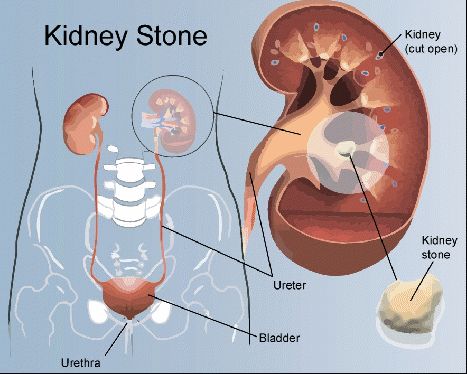Kidney stones are described as renal calculus in medical language and they appear in the form of small hard deposits made up of minerals and uric acid salts.
Though these form in the kidneys, they can be transported to the urinary tract including kidneys, ureters, bladder, and also urethra.
This is a common problem found in the people of ages 30-60 and about one million people are treated every year in our nation.
The major obstacle of bilateral renal calculi is they block urine leaving the body, they are responsible for various kidney infections and also leads to pain when they move around the body.
What Are The Types And Causes Of Bilateral Renal Calculi?
Kidney stones are formed when the solid waste particles are not properly filtered and the urine is not dissolving them. These solid particles tend to remain in the same form and eventually develop as stones. Kidney stones are classified into different types based on the waste particle.
- Calcium is the major cause of the formation of kidney stones and common type of kidney stone found in the body. As Calcium is the most abundant mineral present in the human body. Calcium consumed through food does is not related to the formation of stones, but the amount of oxalate in the diet have direct effects and promotes the formation of stones.
- Generally, Kidney stones(bilateral renal calculi) are made due to excessive consumption of calcium oxalate, phosphate, and palate. Foods like spinach, nuts, beets and potato chips contain high amounts of high oxalate, which promotes the development of Kidney stones
- Uric acid is also responsible for the formation of these stones which are commonly found in men and also in people suffering from gout and under chemotherapy treatment. Uric acid is produced in the body during the process of breaking purines which are found in some foods. These stones tend to form when the person is losing excessive fluids from the body.
- Kidney stone which is made of cystine occurs in people with a genetic disorder called cystinuria. This disease is about too much excretion of certain amino acids from the body.
- Another rare form is made of struvite developed by an infection caused commonly by the urinary tract infection. Magnesium, ammonium, and phosphate are the key substances of struvite. Women are highly at risk for this type compared to men.
Other types of stones are formed as a side effect of over consumptions of drugs and also due to certain medications.
What Are The Risk Factors For Renal Calculi?
Though there are no specific causes for the formation of kidney stones, the scope of risk can be identified by analyzing various diseases.
- Genetic disorders are a major cause of Renal Calculus
- Caucasians are experienced more in African Americans
- Obesity and Gastric bypass surgery
- Metabolic disorders
- Immobilization
- urinary tract abnormalities or Anatomic kidney
- High blood pressure Diet: High levels of protein, salt, and sugar are responsible for formation of tones and causes dehydration due to production of less urine
What Are The Symptoms Of Bilateral Renal Calculi?
Renal Calculi can be identified through some symptoms and can be cured through a proper medication.
A severe pain will be experienced in the lower back or sides and below the rib cage. The pain may vary as per the intensity of the disease.
Other symptoms include severe restlessness, urinating blood, nausea, vomitings, bad-smelling urine, chills, fever, difficulty urinating, or frequently feeling to urinate
Treatments For Curing Renal Calculi :
Treatment is customized according to the type of stone and medication is instructed according to the intensity. Urine samples and stones are collected for the evaluation and to recommend the medication.
People should consume more water to increase their flow like six to eight glasses per day.
Lithotripsy
This treatment uses some sound waves to break up large stones so they can be easily passed down to the ureters into your bladder. This is slightly complicated and uncomfortable as it may require anesthesia.
It may cause slight bruising on the abdomen, back and bleed around the kidney and other nearby organs
Tunnel Surgery (Percutaneous Nephrolithotomy)
Stones are removed through a tiny incision from your back and this treatment may be needed when:
- Kidney stone causes obstruct urine flow and damage the kidneys
- If the stone has developed in huge size.
- When the pain cannot be controlled
This disease can be thwarted by excessive consumption of water for adults. Extreme situations can be analyzed by the detection of symptoms.

